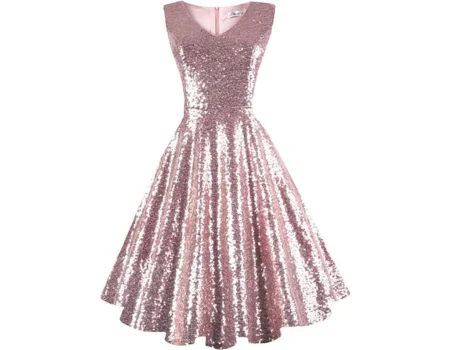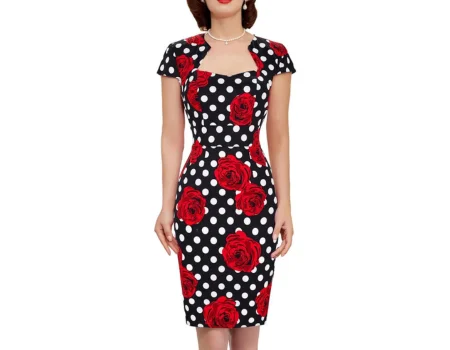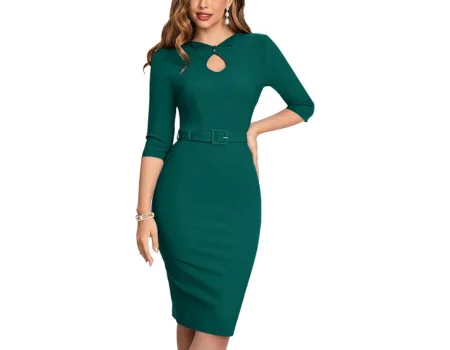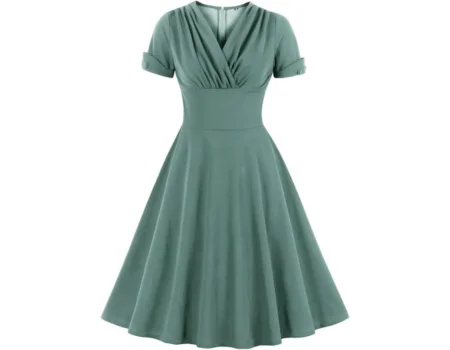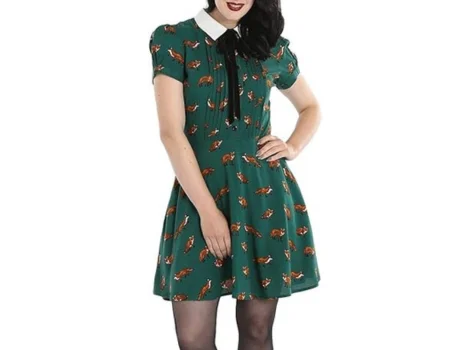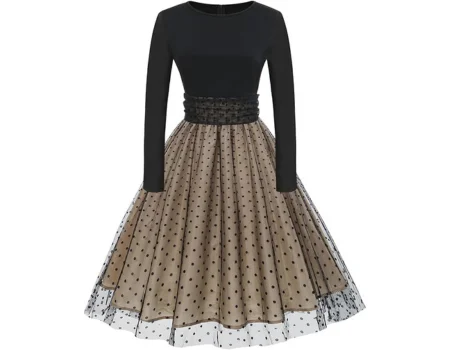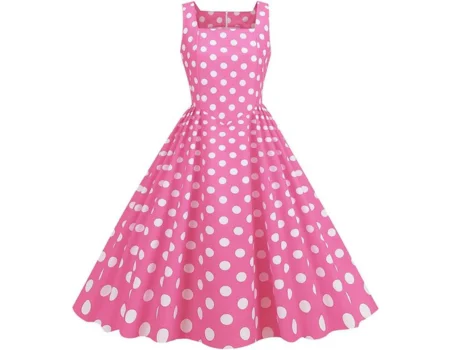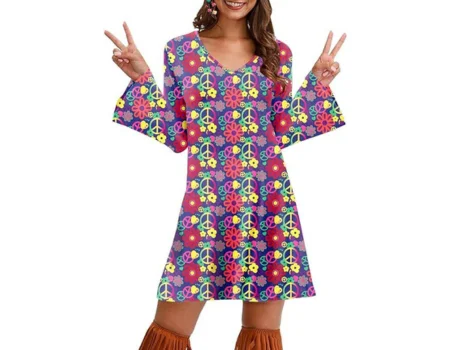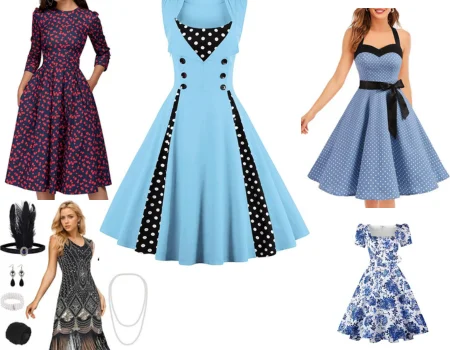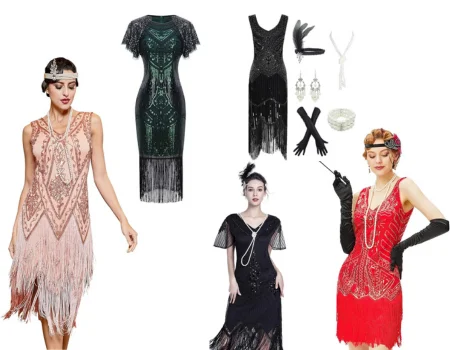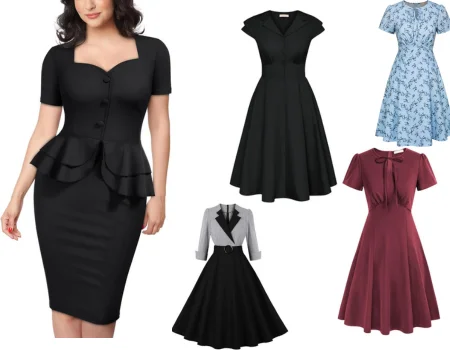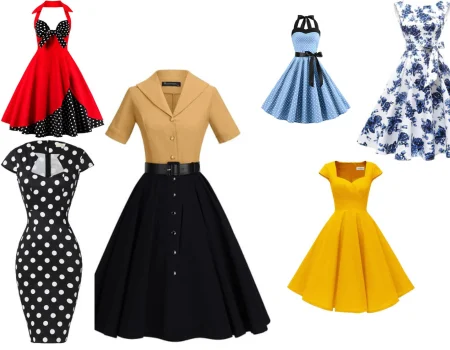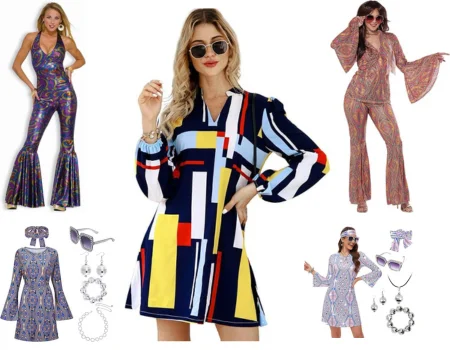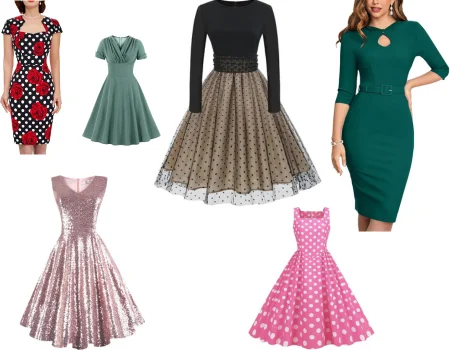
This decade is marked by a profound transformation in fashion, with vibrant colors and new designs that marked a before and after in the way of dressing. Find the perfect 60s dress for you at the best price.
Catalog of 60s Dresses
1960s Dresses: A Decade of Revolutionary Fashion
The 1960s was a transformative decade in fashion history, marked by radical changes, vibrant styles, and cultural revolutions. The era saw the rise of new silhouettes, bold patterns, and innovative designs that broke away from the conservative styles of previous decades. This article will explore the diverse world of 1960s dresses, examining key styles, influential designers, and the cultural influences that shaped this iconic period.
The Cultural Context of 1960s Fashion
The 1960s was a time of significant social and cultural change. The youth movement, civil rights struggles, and the rise of counterculture all influenced fashion, leading to a more relaxed and experimental approach to clothing. London, in particular, became a fashion hub, with Carnaby Street and the King’s Road serving as epicenters of the new styles.
Key Characteristics of 1960s Dresses:
- Silhouettes: The shift dress, with its simple, straight lines, became a defining silhouette of the 1960s. This style was a departure from the fitted waists and full skirts of the 1950s, offering a more relaxed and modern look.
- Hemlines: The mini skirt, popularized by designers like Mary Quant, was a revolutionary change. Hemlines rose to unprecedented heights, symbolizing freedom and youth.
- Patterns and Colors: Bold patterns, geometric designs, and vibrant colors dominated 1960s fashion. Psychedelic prints, color blocking, and op-art designs reflected the era’s artistic and cultural shifts.
Popular 1960s Dress Styles

- Shift Dress: The shift dress was a staple of 1960s fashion. Known for its straight, boxy silhouette, it was comfortable, versatile, and stylish. The 60s shift dress often featured bold colors, mod patterns, and simple lines, making it a favorite among the fashion-forward youth.
- Mod Dress: The mod (short for modernist) subculture embraced sleek, futuristic styles. 1960s mod dresses were characterized by clean lines, geometric shapes, and bold color contrasts. These dresses often featured details like Peter Pan collars, large buttons, and contrasting trim.
- Cocktail Dress: For evening wear, the 1960s cocktail dress was a popular choice. These dresses often had more structure than daytime wear, with fitted bodices, cinched waists, and elegant fabrics like silk and satin. Sequins, beads, and metallic fabrics added a touch of glamour.
- Mini Dress: The mini dress was one of the most iconic inventions of the 1960s. Hemlines rose dramatically, with the mini dress often falling well above the knee. This style was daring, youthful, and embodied the spirit of the swinging sixties.
- Paper Dresses: An innovative yet short-lived trend, paper dresses of the 1960s were disposable garments made from cellulose. They featured bold prints and were often used for promotional purposes. Despite their impracticality, they became a symbol of the decade’s experimental fashion spirit.
Influential Designers of the 1960s
Several designers left an indelible mark on 1960s fashion, creating styles that continue to influence modern designs.
- Mary Quant: Often credited with popularizing the mini skirt, Mary Quant was a key figure in 1960s fashion. Her designs were youthful, playful, and accessible, making fashion fun and liberating for young women.
- André Courrèges: Known for his futuristic designs, Courrèges introduced space-age fashion to the 1960s. His use of innovative materials like PVC, and his sleek, minimalist dresses, embodied the decade’s fascination with technology and progress.
- Pierre Cardin: Cardin’s avant-garde designs were a staple of 1960s fashion. His use of bold shapes, geometric patterns, and unorthodox materials helped define the mod look.
1960s Dresses for Different Occasions
- 60’s Party Dress: Party dresses of the 1960s were vibrant and fun, often featuring bold prints, bright colors, and eye-catching details. These dresses were designed to make a statement and were perfect for the lively social scenes of the era.
- 60s Prom Dresses: Prom fashion in the 1960s saw a mix of traditional elegance and modern trends. Dresses ranged from full-skirted gowns reminiscent of the 1950s to sleek, column-style dresses that embraced the new minimalist aesthetic.
- 1960s Formal Dresses: Formal dresses of the 1960s often featured clean lines, luxurious fabrics, and sophisticated details. These dresses were designed for formal events and evening wear, exuding elegance and style.
The Enduring Appeal of 1960s Fashion
The fashion of the 1960s continues to inspire designers and fashion enthusiasts today. The bold styles, innovative designs, and cultural significance of the decade have left a lasting legacy. Key elements of 1960s fashion that remain popular include:
- Shift Dresses: The simplicity and versatility of the shift dress make it a timeless favorite.
- Mini Skirts: The daring hemlines of the 1960s continue to influence modern fashion, symbolizing freedom and youthful rebellion.
- Mod Styles: The clean lines and bold patterns of mod fashion remain popular, reflecting a love for all things retro and futuristic.
Finding Authentic 1960s Dresses Today
For those looking to add authentic vintage dresses to their wardrobe, vintage clothing stores and online marketplaces offer a wealth of options. When shopping for vintage 1960s dresses, consider the following tips:
- Check for Quality: Look for dresses made from high-quality fabrics with well-constructed seams and details. Authentic 1960s dresses often feature unique craftsmanship and materials.
- Consider Fit: Vintage sizing can differ from modern sizing, so it’s essential to know your measurements and try on dresses whenever possible.
- Look for Authenticity: Pay attention to labels, zippers, and buttons, as these can provide clues about the dress’s authenticity and era.
Conclusion
The 1960s was a decade of revolutionary fashion that broke away from the past and embraced a bold, new future. From the simplicity of the shift dress to the daring hemlines of the mini dress, 1960s dresses embodied a spirit of freedom, creativity, and innovation. Whether you’re drawn to the mod styles, the vibrant patterns, or the timeless silhouettes, 1960s fashion offers a wealth of inspiration for vintage enthusiasts and contemporary designers alike. The enduring appeal of 1960s dresses lies in their ability to capture the essence of a transformative era, celebrating the bold and the beautiful in fashion.


